| テーマ | 『21世紀の食の安全、健康志向を目指した食品開発の展望』 |
||||
| 開会の挨拶 | 本会会長 大阪府立大学農学部教授 森田尚文氏 | ||||
 |
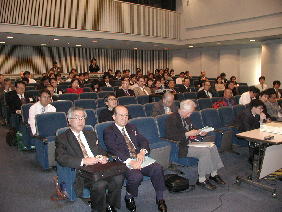 |
||||
| 講演 | 澱粉の構造・機能特性の研究方法―米澱粉を中心に 大阪市立大学名誉教授、福山大学名誉教授 不破英次氏 |
||||
|
20世紀後半の科学と技術の進歩は目覚ましく澱粉の科学と技術に関してもその例外ではない。ここでは次の3点を中心に澱粉の研究方法の進歩について述べる、 |
|||||
| 不破英次氏 |  |
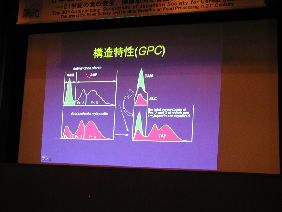 |
|||
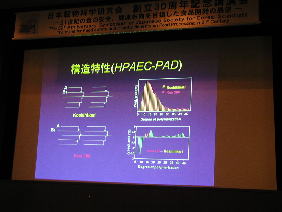 |
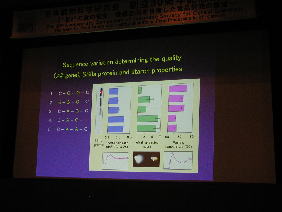 |
||||
| 世界の麺食文化―その歴史と現状 国立民族博物館名誉教授 |
|||||
| 1.問題点 コメ、ソバ、ハダカエンバクなども麺に加工されるが、それらはコムギ粉を原料とした麺つくりから派生したものと考えられる。図1は19世紀初頭の世界で麺状食品が普及していた地域を示す。アジアにおいては、北はモンゴル、南は東南アジア、東は日本、西は中央アジアのオアシスを経由してカスピ海東岸にいたる地帯が麺の分布域である。さまざまな証拠から、アジアの麺は中国から伝播したものと考えられる。ヨーロッパにおいては、イタリアで麺が食べられていた。コムギは西アジアに起源した作物で、シルクロードを経由して中国に伝えられた。それではコムギ粉を麺に加工する技術は、コムギとともに中国に伝えられたものか、それとも中国、イタリアのそれぞれで独立発生したものであろうか。 2.中国での麺の始まり コムギとそれにともなう回転式石臼が中国に伝えられたのは戦国時代(BC.403~221)のことである。前漢代には華北平野がコムギの産地となり、当時の文献に「餅」があらわれる。古典中国語ではコムギ粉を「麺」と記し、コムギ粉を「餅」と表記した。中国は古代から、蒸す料理と、椀型の食器と箸を使用して食べるスープ状の料理が発達していた。パン状にして焼いて食べるコムギ粉が、中国においてはスイトンのようにスープに入れて食べる「湯餅」と、蒸しパンである「饅頭」に変形したのである。 「湯餅」はワンタン、餃子のように薄い皮に加工する「麺片」と、うどん状に加工した「麺條」の系統に分化する。 3.アジアの麺の製法の分類と分布 製麺法を大別すると次の5系列に分類される。 1)手延べラーメン系列 2)そうめん系列 3)切り麺系列 4)押し出し麺系列 5)河粉系列 この5種類の製麺法のすべてが中国で成立し、周辺地域に伝播した。(図2参照)。コムギ作をしない地域で、グルテンに乏しい穀類を麺状に加工する技術として考案されたのが、4)押し出し麺系列と、5)河粉系列の製麺法である。 4.中国とイタリアをつなぐ 12世紀のシチリア島でイットリーヤ(itriya)という乾麺が製造されたことがわかる記録があり、それがイタリア本土に広まったものと考えられる。シチリア島は一時アラブの支配下にあった場所である。近年の研究で、、モロッコから北アフリカを経て中東にいたる中世のアラブ文明において、イットリーヤが分布していたことがわかる。一方、イットリーヤと同じものが中世の中央アジアに分布していたことも判明した。そこで、中国起源の麺が中央アジアを経由して、ペルシャ、アラブ文明圏にもたらされ、それがイタリアのヒモ状のパスタになったと考えられる。ただし、原料に硬質コムギを使用する、螺旋運動による押し出し麺の製法を考案した、ソースであえて食べるなど、イタリア独自の麺文化が形成されたことも留意される。 5.麺の現代的展開 20世紀後半の日本で、麺食の歴史に画期的な発明がなされた。1958年のチキンラーメンと、1971年のカップヌードルの発売で、両者とも安藤百福氏の考案した商品である。手軽に食べられる即席麺は、まずアジア各地に普及したが、それは箸と椀で汁麺を食べる伝統のある地域である。パッケージが食器兼調理道具となり、フォークをそろえたカップ麺となると、箸、椀の文化圏をこえて普及した。 2003年に全世界で消費された即席麺は652億食であり、其のうち日本から輸出量は8710万色である。すなわち、世界各地で現地生産される、世界商品となっている。 |
|||||
| 石毛直道氏 | 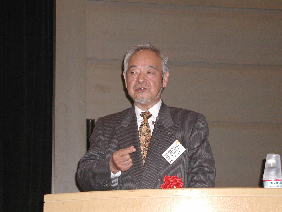 |
 |
|||
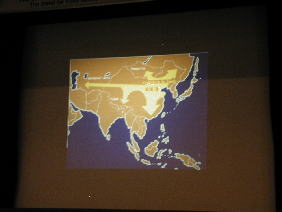 |
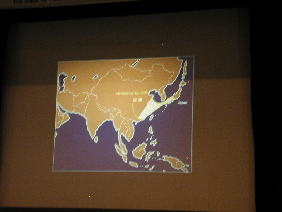 |
||||
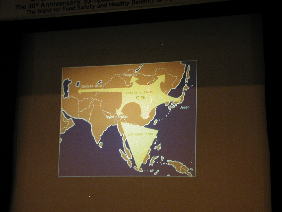 |
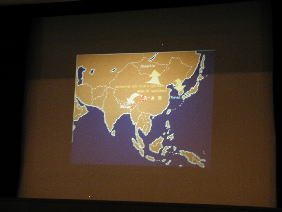 |
||||
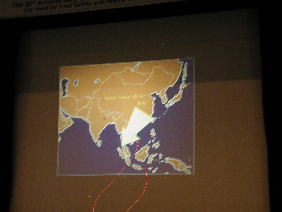 |
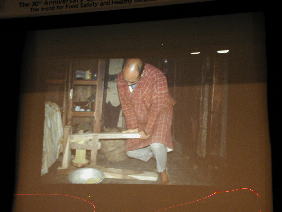 |
||||
| Canadian Wheat Quality Control for the Japanese Market カナダ・マニトバ大学名誉教授 |
|||||
| Japan buys 26% or 1.5 million tonnes of
its imported wheat quota from Canada. The high quality of Canadian wheat,
required by the Japanese milling and baking industry, is a key factor that
influences the decision to buy Canadian. Quality is controlled by a series of
scientific tests applied at four critical points in the wheat system from
breeding new varieties to loading of cargo vessels for export. Japanese cereal
scientists have contributed significantly to research on the quality
required by Japanese consumer. The first critical point where quality is taken into consideration is in the selection of the parents for breeding new varieties. All of the required “quality” genes must be present in the parents. New varieties offered by the wheat breeder for registration must meet two important quality-related criteria. Grain of the new variety must be visually distinguishable from grain of varieties already registered and commercially grown. End-use quality of the new variety must be equal to that of the standard variety for the class. The second critical point in the quality control system occurs at the delivery of the grain by the farmer to the commercial handling facility. Here, the grain is classified, by visual inspection, into one of seven classes. The classes that are best known in Japan are the Canada Western Red Spring, used mainly for bread, and Canada Western Amber Durum for pasta manufacture. Grain of a specific class is segregated into numerical grades based on moisture content, test weight, grain condition, and presence of impurities. Grain of the top two grades of CWRS class is segregated according to protein content. Within a class of similar varieties, protein content is the most important single quality attribute for bread. The class and grade are checked at two more critical points, this time by government inspectors, before the grain leaves Canada for the export destination. Canada’s grain quality control systems are controlled by one agency of the Federal Government, The Canadian Grain Commission. Future wheat processing systems will require wheat of specific functional quality for specific end-products. Rapid grain handling will require rapid automated quality testing. Because “quality” is determined by many different attributes, such as hardness, falling number, protein content, protein quality, etc., all attributes will have to be measured by a single test or by a series of tests which can be simultaneously integrated by computer. The “universal” wheat quality test is yet to be discovered. New classes or varieties will be developed to meet the requirements of new products. Specialized varieties will be handled by identity-preserved systems. Pressure to release genetically modified varieties will mount. Special quality screening of these wheats will be required. Cooperation among all sectors of the Canadian wheat system will be necessary to meet future wheat quality requirements. |
|||||
| Dr.Bushuk |  |
 |
|||
| 世界の穀物の現状と将来の展望 Mr.David Iwaasa カナダ小麦局 東京事務所長 |
|||||
| Mr.Iwaasa | 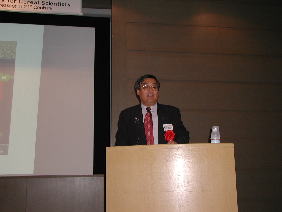 |
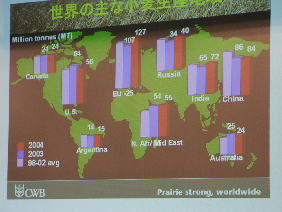 |
|||
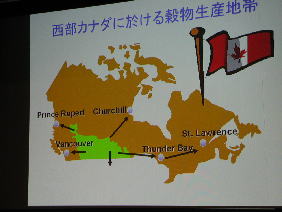 |
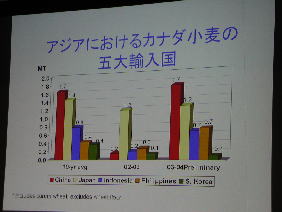 |
||||
| 健康志向に対応した製品の開発と食の安全に対する話題提供について 山田雄司氏 山崎製パン株式会社中央研究所 所長代理 |
|||||
|
弊社で取り進めてきたパン関連の話題として、以下の二件について紹介したい。 |
|||||
| 山田雄司氏 | 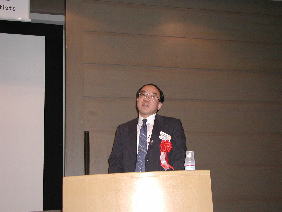 |
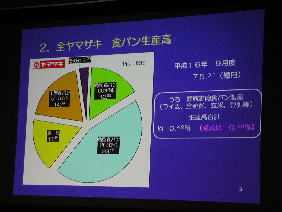 |
|||
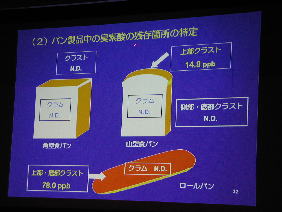 |
 |
||||
| 当会創始者 松本博氏 |
 |
 |
|||
| 懇親会 | 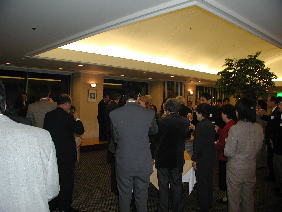 |
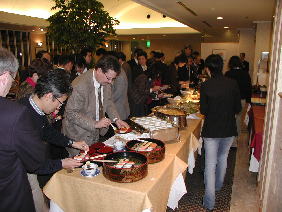 |
|||
 |
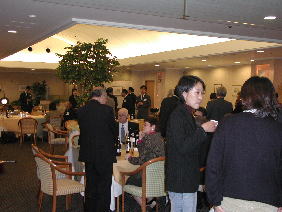 |
||||
| 連絡先 | 三宅製粉㈱ (〒544‐0034 大阪市生野区桃谷3-2-5) 関西穀物科学研究会事務局 林 孝治(Tel 06-6731-0095、Fax 06-6731-0094 E‐mai:[email protected]) |
||||